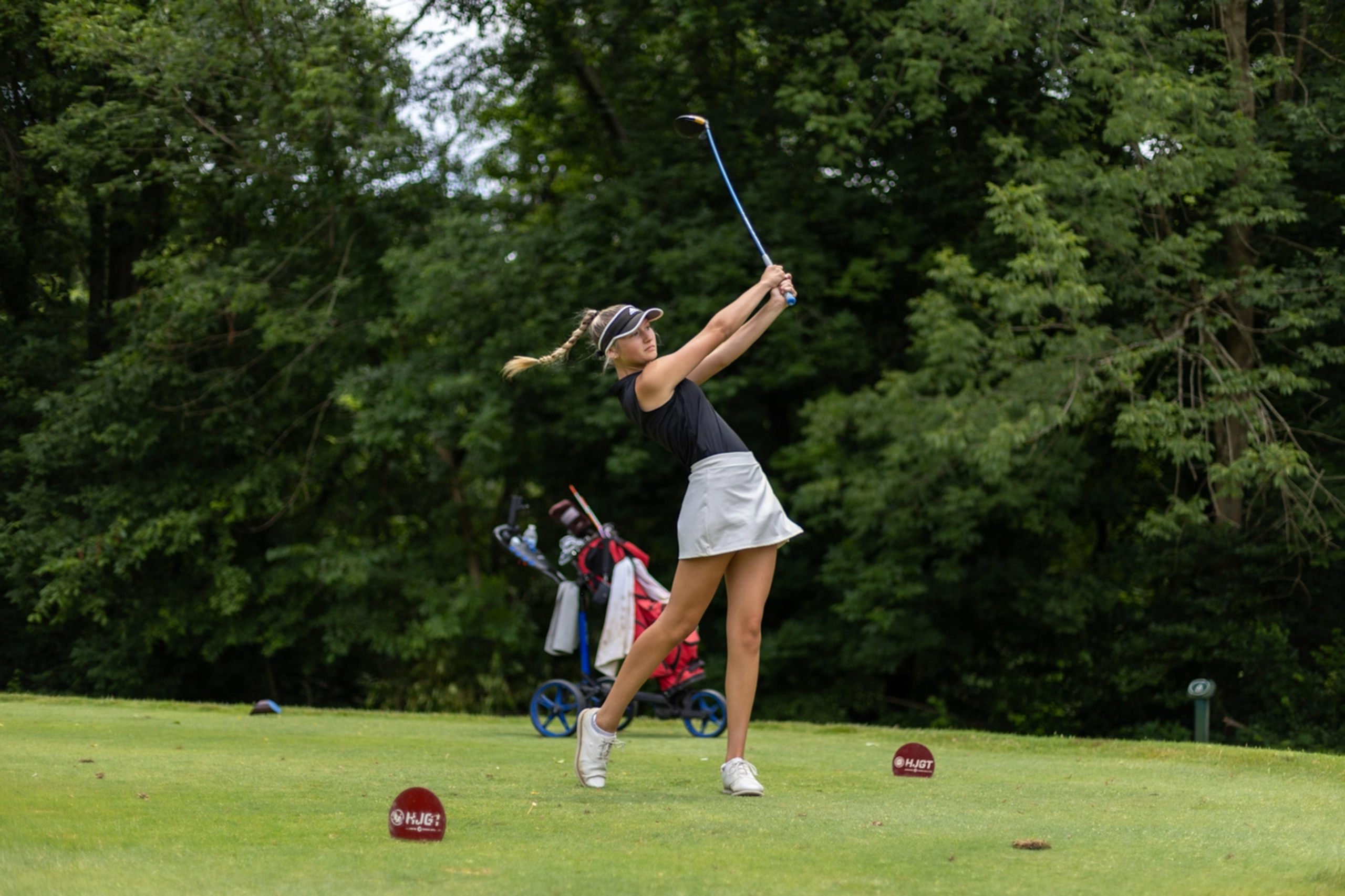A golfer is nothing without the golf clubs they have. It doesn’t matter if they are brand new or hand-me-downs, whatever you have will help you play this beautiful game. In today’s blog, we will look at understanding the clubs, what each one does, and what those numbers mean. There are different classifications for golf clubs, and we will look at those and the clubs that fall under them.
Driver:
A driver is a type of wood that has the lowest loft among all golf clubs. It is commonly employed for striking powerful shots from the tee on longer holes. Most players carry a driver (1 wood) in their bags, and it is commonly used on par 4s and 5s. The loft of a driver ranges between 7 and 12 degrees, with higher lofted drivers being easier to hit and better suited for beginners and recreational players. Pros typically play lower lofted drivers that can be hit further. Most players rely on teeing up the ball to achieve a successful drive with a driver. The average distance for recreational players is around 200-230 yards for men and 150-175 yards for women.
Fairway Woods (3 & 5 Woods):
Fairway Woods are a type of club designed for long shots. Among the commonly used fairway woods are the 3-wood and the 5-wood, with loft angles ranging from 15 to 18 degrees and 20 to 22 degrees, respectively. These clubs are specifically crafted for maximum distance and accuracy, making them a valuable asset in a golfer’s arsenal. They are typically used by golfers playing their second and third shots from the fairway, but they can also be used on the tee box on slightly shorter holes where the use of a driver isn’t necessary. The average distance for recreational players using a 3-wood is around 180-215 yards for men and 150-175 yards for women. The average distance for recreational players using a 5-wood is around 170-195 yards for men and 105-135 yards for women. In golf, woods are indispensable clubs in a player’s bag, as launching the ball straight and far down the fairway is pivotal for achieving a competitive score. Although mastering them can be challenging, executing long shots is an integral aspect of the game.
Short Irons (8 and 9 Iron Clubs):
Short irons are the 8 and 9 irons that golfers use for the direct approach to the green. Some golfers consider a 7 iron to be part of their short game as well. Short irons, often referred to as scoring irons, are a golfer’s weapon of choice when it comes to achieving a birdie or par with a remarkable approach. These irons are easier to hit for recreational players because the loft increases and the shaft length decreases simultaneously, allowing more control over the shot and enabling players to shape their shots on approach. Although short irons are typically used in and around the green, they can also be used on short par 3s or if a golfer is looking to elevate the ball elsewhere on the course to avoid a particular hazard.
Medium Irons (5, 6, and 7 Iron Clubs):
Medium irons are the collective term given to the 5, 6, and 7 irons. Medium irons, with their slightly longer shaft and less loft, present a moderate challenge when it comes to hitting and controlling shots. Nonetheless, they are indispensable in any golfer’s bag, serving as the go-to clubs for most players within 160 yards of the green. In fact, players often rely on their medium irons even on par 3 tee boxes, as they provide an opportunity for a controlled and elevated approach to the green. For recreational players, the average distance of a 7 iron is between 120-140 yards for men and 65-90 yards for women.
Long Irons (3 and 4 Iron Clubs):
Long irons, such as the 3 and 4 irons, are typically used by golfers for their second shots on long par 4s and par 5s, and occasionally from the tee box of long par 3s. While some may categorize the 5 iron as a long iron, it is more commonly grouped with the medium irons. The challenge lies in controlling the flight and trajectory of long irons, prompting many players to opt for the more forgiving hybrids, ensuring they can achieve the necessary distances on longer holes throughout the course. For recreational players, the average distance of a 4 iron is between 150-170 yards for men and 90-120 yards for women.
Wedge Family:
Wedges are specialized iron clubs resembling blades that allow golfers to effortlessly lift the ball when navigating the green and accurately aiming for the flagstick. The loft of wedges, which increases by increments of 4 degrees, constitutes their most intricate attribute. Wedges are versatile clubs that can be used from the fairway, rough, fringe, and even the sand surrounding the green. Most golfers carry multiple wedges in their bag to accommodate the diverse situations they may encounter as they approach the green. Golfers specifically pick their wedges to play certain shots, which is how they’re able to control their approach play as they look to score on the green.
Pitching Wedge:
The pitching wedge, classified as one of the short irons, boasts the lowest loft among the wedge family with an angle of 46-48 degrees. It possesses the ability to propel the ball the farthest and is preferred for its low bounce and narrow to medium-depth design. Men can expect an average distance of 80-105 yards, while women can expect 60-70 yards.
Sand Wedge:
True to its name, the sand wedge is primarily crafted for bunker shots, yet its utility extends beyond sandy terrains. Golfers resort to the sand wedge when faced with challenging lies that lie outside the bunker. With a loft ranging between 54-56 degrees, the sand wedge offers the greatest bounce among all wedges. Its exceptional recovery capabilities make it an indispensable addition to any golfer’s bag. Men can expect an average distance of 60-80 yards, while women can expect 40-50 yards.
Gap Wedge:
The gap wedge derives its name from its position between the pitching wedge and sand wedge in terms of loft. With more loft than a pitching wedge and less loft than a sand wedge, it typically ranges between 50-52 degrees. Men can expect an average distance of 70-90 yards, while women can expect 50-60 yards. This versatile club is suitable for various approach shots, including pitches, bump and runs, and long bunker shots.
Lob Wedge:
The lob wedge is typically the golfer’s highest lofted club, boasting a loft between 58-60 degrees. Its design allows for a steep angle of ascent and descent, ensuring shots that are executed well soar swiftly into the air. The highly versatile pitching wedge is primarily used to navigate obstacles like trees, bushes, or other hurdles encountered while approaching the green. Additionally, the lob wedge is invaluable for delicately pitching a ball onto the putting surface, minimizing roll and maximizing precision. Men can expect an average distance of 45-60 yards, while women can expect 30-40 yards.
These 9 categories cover just about any club that you could have in your bag on the course. It is an important part of golf to know when to use what club and hopefully this blog helps you figure that out.



